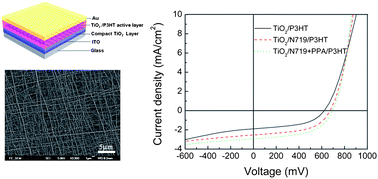Hybrid solar cells based on poly(3-hexylthiophene) and electrospun TiO2 nanofibers with effective interface modification
Abstract

* Corresponding authors
a
Department of Applied Physics The Hong Kong polytechnic University, Kowloon, Hong Kong, China
E-mail:
apafyan@polyu.edu.hk
b KeyLaboratory of Artificial Micro- and Nano-structures of Ministry of Education and School of Physics and Technology Wuhan University, Wuhan, China

 Please wait while we load your content...
Something went wrong. Try again?
Please wait while we load your content...
Something went wrong. Try again?
Q. Tai, X. Zhao and F. Yan, J. Mater. Chem., 2010, 20, 7366 DOI: 10.1039/C0JM01455A
To request permission to reproduce material from this article, please go to the Copyright Clearance Center request page.
If you are an author contributing to an RSC publication, you do not need to request permission provided correct acknowledgement is given.
If you are the author of this article, you do not need to request permission to reproduce figures and diagrams provided correct acknowledgement is given. If you want to reproduce the whole article in a third-party publication (excluding your thesis/dissertation for which permission is not required) please go to the Copyright Clearance Center request page.
Read more about how to correctly acknowledge RSC content.
 Fetching data from CrossRef.
Fetching data from CrossRef.
This may take some time to load.
Loading related content
